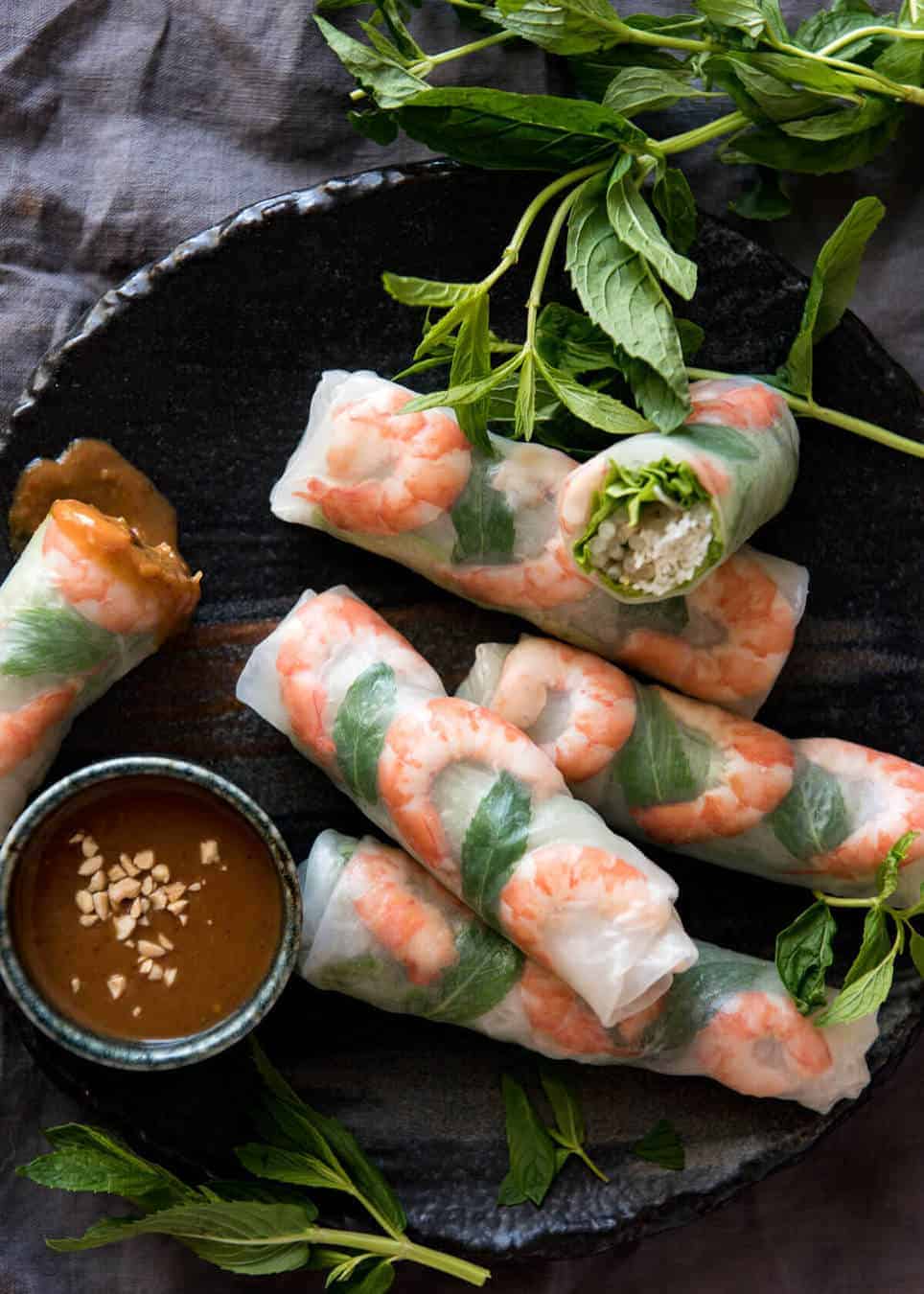Beginner’s Guide to Crafting Authentic Vietnamese Rolls with Your Family
Welcome to the wonderful journey into the heart of Vietnamese cuisine! Whether it’s cozy weekends or the search for a fun cooking project with your little chefs, making Vietnamese rolls can be a delightful bonding experience. Discover the joy of preparing the much-loved, fresh, and healthy Vietnamese rolls together with this step-by-step guide ideal for families!
Understanding Vietnamese Rolls
Vietnamese rolls, often referred to as spring rolls or summer rolls, are typically fresh, light, and packed with a combination of herbs, vegetables, vermicelli noodles, and sometimes meat or shrimp. Loved for their wholesome ingredients and flavorful dipping sauces, they’re a versatile dish that can be customized to cater to everyone in the family, including those with dietary restrictions.
The Various Types of Vietnamese Rolls
- G?i cu?n – These are the classic fresh summer rolls, wrapped in rice paper.
- Ch? giò – The crispy, fried version of Vietnamese rolls, filled with ground meat and veggies.
Why Vietnamese Rolls are Perfect for Family Cooking
Learning to make Vietnamese rolls is more than just following a recipe; it’s an engaging, hands-on activity that helps kids develop fine motor skills and a sense of accomplishment. Plus, customizing each roll to personal taste encourages creativity and ensures everyone is happy and full!
Gearing Up: What You’ll Need
Before diving into the art of roll-making, make sure you’ve got all the essentials:
- Ingredients Checklist:
- Rice paper wrappers
- Thinly sliced vegetables (cucumber, bell peppers, carrots)
- Fresh herbs (mint, cilantro, basil)
- Cooked protein (shrimp, pork, tofu)
- Vermicelli rice noodles
- Optional: Lettuce or mixed greens
- Equipment Checklist:
- A large bowl of warm water (for softening rice paper)
- A clean, damp kitchen towel (work surface)
- Sharp knife (for prepping ingredients)
- Chopping board
- Dipping Sauce Essentials:
- Hoisin sauce
- Peanut butter
- Fish sauce
- Lime juice
- Garlic, chopped
- Chili (optional, for an added kick!)
The Step-by-Step Roll Making Process
Now that your ingredients are prepped, rolling can be a simple and entertaining experience. Just follow these steps to get started:
- Soften the Rice Paper: Dip a single rice paper wrapper into the bowl of warm water for about 10-15 seconds until it’s just pliable but not overly soggy.
- Assemble on the Work Surface: Lay the softened wrapper on the damp kitchen towel. Flat out the wrapper and distribute your choice of herbs, vegetables, proteins, and noodles in the center, remembering not to overfill.
- Wrap Like a Pro: Fold in the sides of the wrapper, then roll up tightly from the bottom, encasing the filling. With each roll, use your fingers to tuck and tighten the fillings within the rice paper wrap.
Don’t worry if the first few attempts aren’t perfect; it takes a bit of practice to get into your rolling groove. Once you master the technique, you’ll be churning out rolls like a pro!
Spicing It Up: Dipping Sauces and Flavors
The perfect Vietnamese roll is nothing without its trusty dipping sauce sidekick. Mixing up a classic sauce like peanut hoisin or a zesty fish sauce-based dip can take your roll to the next level:
- Peanut Hoisin Sauce: Combine equal parts hoisin sauce and water, then add peanut butter to taste. Heat gently, adding more water if needed, until creamy and smooth.
- Fish Sauce Dip (N??c ch?m): Mix fish sauce, water, fresh lime juice, sugar, garlic, and sliced chili. Stir until sugar dissolves.
Crafting your own Vietnamese rolls can open up a world of flavor and wholesome eating for your family. Not only does this activity promote healthy habits, but it also introduces young children to new cuisines and cultures through a hands-on kitchen adventure! Keep rolling, tasting, and most importantly, have fun as a family cooking up a storm of delicious Vietnamese rolls!
Stay tuned for more detailed instructions on ingredient preparation, advanced rolling techniques, and creative ways to involve the whole family in this culinary experience!

Five Essential Tips for Parents Preparing Vietnamese Rolls
1. Ingredient Preparation: The Key to Success
Begin by prepping all your ingredients ahead of time. This not only makes the process smoother but can become a learning moment for the kiddos. Show them how to wash veggies, explain the importance of thinly slicing for easier rolling, and discussing the flavors each ingredient adds to the rolls. It’s a perfect time to teach about food safety and knife skills under adult supervision.
2. Safety First!
It’s all fun and games until someone cuts a finger. Pick out child-friendly equipment whenever possible such as plastic knives for herb picking and tearing, and always supervise when using sharper tools. For younger children, pre-cut the ingredients and let them focus on the fun part—rolling and eating!
3. Organize a Roll-Making Station
Assign a rolling station for each family member, equipped with a damp kitchen towel and a bowl of warm water. This set-up minimizes mess and makes it easier for everyone to have their own personalized roll-making experience. Plus, it prevents rice papers from sticking to surfaces and tearing.
4. Embrace the Mess and Imperfection
Your first Vietnamese rolls may not look restaurant-worthy, and that’s perfectly okay. Encouraging kids to embrace the imperfections in their rolls is a wonderful way to boost their confidence. Celebrate their effort and remember, even the messiest rolls will still taste great!
5. Engage in Cultural Storytelling
While you’re all rolling, it’s a fantastic opportunity to engage with your children about the history and culture of Vietnamese cuisine. Share stories or play some traditional Vietnamese music in the background. It’s more than just making food; it’s about making memories and expanding their cultural horizons.
Rolling Ahead: Mastering Vietnamese Rolls Together
As you gather around the table and everyone begins crafting their own Vietnamese rolls, take a moment to soak in the joy. This is what family cooking is all about – sharing, laughing, and maybe nibbling on some ingredients along the way. Keep in mind these five tips to make your Vietnamese roll-making adventure both enjoyable and memorable:
- Prepare your ingredients beforehand, and use this time as a teachable moment.
- Keep safety front and center, especially with knives and other sharp utensils.
- Create individual roll-making stations to keep the process organized and fun.
- Enjoy the experience, even the messy parts, and praise the efforts of your little helpers.
- Infuse your cooking with stories of the Vietnamese culture to enrich the experience.
These tips will ensure that your family’s foray into making Vietnamese rolls is more than just preparing a meal—it’s about spending quality time together and creating lasting family traditions. Roll up your sleeves, share smiles over the rice paper, and watch as your family’s love for Vietnamese cuisine rolls into their hearts.
Embark on this culinary adventure equipped with an open mind, an appetite for fun, and a dash of patience. Before long, Vietnamese rolls might just become a staple in your family’s cooking repertoire. So, let’s get rolling!
For more great articles please see here. For more information see here
Disclaimer
The articles available via our website provide general information only and we strongly urge readers to exercise caution and conduct their own thorough research and fact-checking. The information presented should not be taken as absolute truth, and, to the maximum extent permitted by law, we will not be held liable for any inaccuracies or errors in the content. It is essential for individuals to independently verify and validate the information before making any decisions or taking any actions based on the articles.




